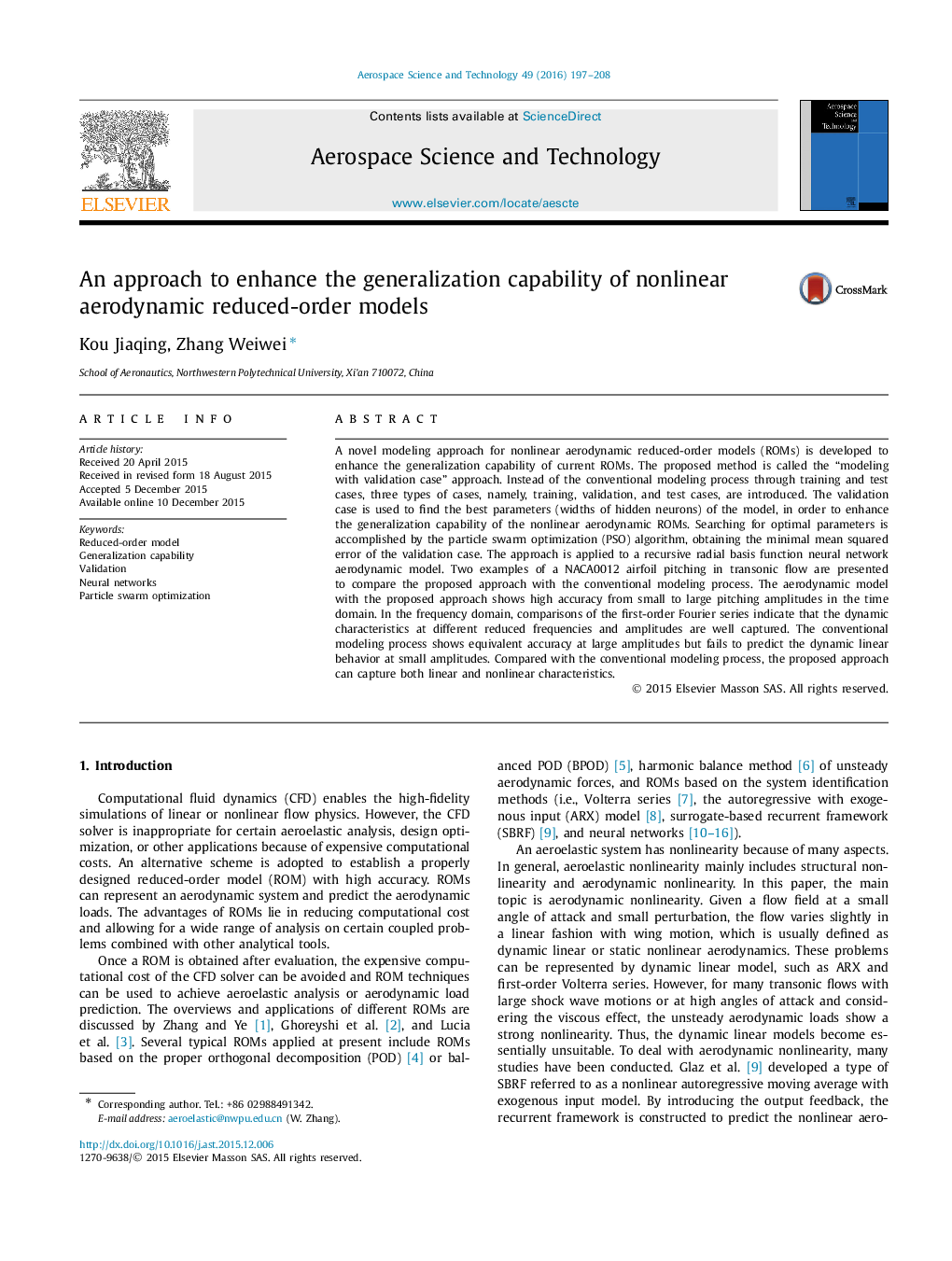| Article ID | Journal | Published Year | Pages | File Type |
|---|---|---|---|---|
| 1717746 | Aerospace Science and Technology | 2016 | 12 Pages |
A novel modeling approach for nonlinear aerodynamic reduced-order models (ROMs) is developed to enhance the generalization capability of current ROMs. The proposed method is called the “modeling with validation case” approach. Instead of the conventional modeling process through training and test cases, three types of cases, namely, training, validation, and test cases, are introduced. The validation case is used to find the best parameters (widths of hidden neurons) of the model, in order to enhance the generalization capability of the nonlinear aerodynamic ROMs. Searching for optimal parameters is accomplished by the particle swarm optimization (PSO) algorithm, obtaining the minimal mean squared error of the validation case. The approach is applied to a recursive radial basis function neural network aerodynamic model. Two examples of a NACA0012 airfoil pitching in transonic flow are presented to compare the proposed approach with the conventional modeling process. The aerodynamic model with the proposed approach shows high accuracy from small to large pitching amplitudes in the time domain. In the frequency domain, comparisons of the first-order Fourier series indicate that the dynamic characteristics at different reduced frequencies and amplitudes are well captured. The conventional modeling process shows equivalent accuracy at large amplitudes but fails to predict the dynamic linear behavior at small amplitudes. Compared with the conventional modeling process, the proposed approach can capture both linear and nonlinear characteristics.
